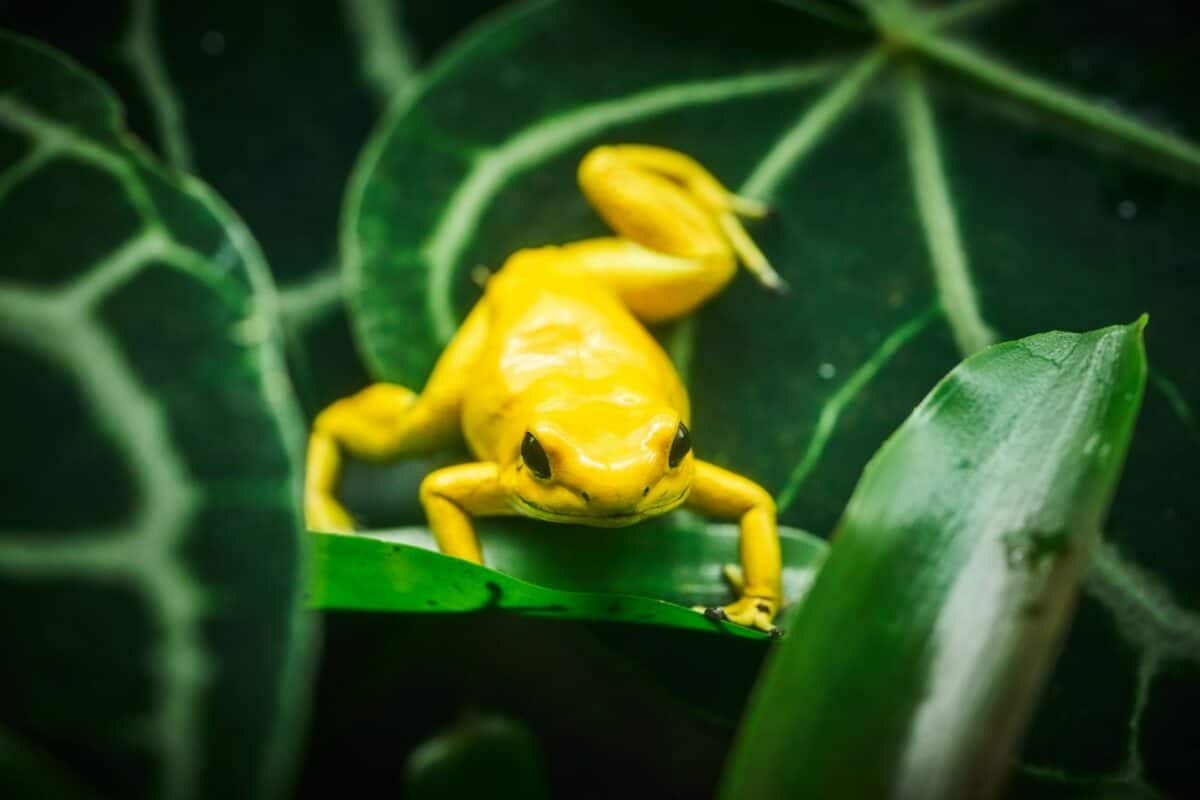In the dense, misty rainforests of Colombia lives a tiny amphibian with an extraordinary distinction: it possesses the most potent natural toxin discovered by science. The golden poison frog (Phyllobates terribilis), measuring just two inches long, carries enough poison on its vibrant skin to kill ten grown men. Despite its diminutive size, this remarkable creature represents one of nature’s most fascinating examples of chemical defense. Its toxic capabilities have captivated scientists, inspired medical research, and earned it a fearsome reputation that belies its colorful, almost toy-like appearance. Let’s explore the remarkable world of this extraordinarily toxic amphibian that sits at the pinnacle of nature’s chemical warfare.
Meet the Golden Poison Frog

The golden poison frog (Phyllobates terribilis) belongs to the Dendrobatidae family, commonly known as poison dart frogs. Endemic to Colombia’s Pacific coast, particularly the rainforests of the Chocó Department, this amphibian stands out with its brilliant yellow coloration, though some populations display mint-green or orange hues. Growing to approximately 2 inches (5 cm) in length, these frogs are relatively large compared to other poison dart species. Unlike many amphibians that prefer nocturnal activities, the golden poison frog is diurnal, boldly hopping around the forest floor during daylight hours. Its bright coloration serves as a warning signal to potential predators—a phenomenon known as aposematism that effectively advertises its deadly toxic nature.
The World’s Most Potent Natural Toxin
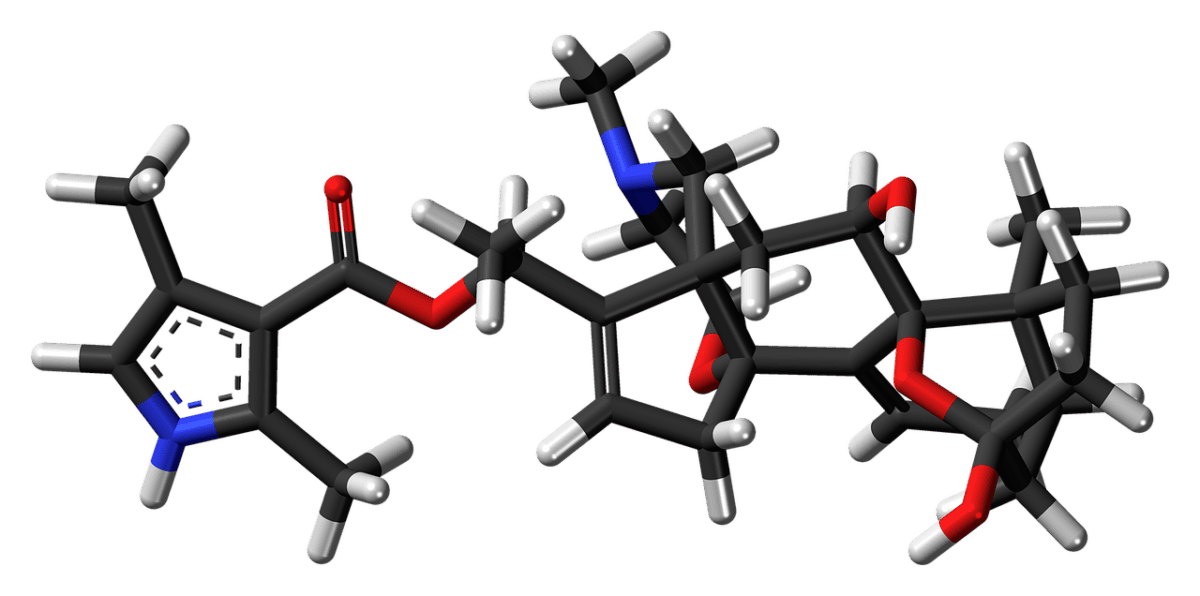
What makes the golden poison frog truly remarkable is batrachotoxin, the potent neurotoxin secreted through its skin. This toxin is staggeringly powerful—a single frog carries an estimated 1,900 micrograms of toxin, enough to kill 10-20 adult humans or approximately 10,000 mice. To put this in perspective, batrachotoxin is 250 times more potent than strychnine and far deadlier than many venomous snake toxins. The toxin works by permanently opening sodium ion channels in nerve cells, causing continuous nerve firing that leads to muscle contraction, fibrillation, heart arrhythmias, and eventually respiratory paralysis. The lethal dose for humans is estimated to be as little as 2 micrograms, making it one of the most potent toxins by weight in the natural world. Unlike some toxins that require ingestion, batrachotoxin can be absorbed through the skin, making even handling these frogs potentially lethal.
Evolutionary Purpose of the Toxin

The extreme toxicity of the golden poison frog represents a remarkable evolutionary adaptation for survival. The primary function of this powerful defense mechanism is predator deterrence. In the competitive ecosystem of the tropical rainforest, these small amphibians would be easy prey without their chemical protection. The toxin provides an effective survival strategy that allows the frogs to move about openly during daylight hours without fear of predation. Their aposematic coloration works in tandem with their toxicity—potential predators learn to associate the bright colors with a deadly meal and avoid the frogs altogether. This evolutionary strategy demonstrates a fascinating balance: the frog’s lack of physical defenses is compensated by its chemical weaponry, allowing it to occupy an ecological niche that would otherwise be unavailable to such a small, vulnerable creature.
Indigenous Use in Hunting

The lethal secretions of the golden poison frog have been utilized by indigenous communities for centuries, particularly by the Emberá people of Colombia’s rainforests. These communities traditionally harvest the toxins to create deadly blow darts for hunting. The process involves carefully capturing the frogs (often using leaves to avoid direct skin contact), then gently stimulating them to release their toxins. The tips of hunting darts are rubbed against the frog’s skin to collect the secretions, creating weapons potent enough to bring down monkeys and other game animals. The poison’s effectiveness is so long-lasting that darts properly prepared can remain lethal for up to a year. This cultural practice gave rise to the common name “poison dart frog,” though it’s worth noting that only three species of Phyllobates frogs, including the golden poison frog, were actually used for this purpose. These traditional hunting practices have declined in modern times, but they represent a significant cultural connection between indigenous peoples and this remarkable amphibian.
The Diet-Toxicity Connection
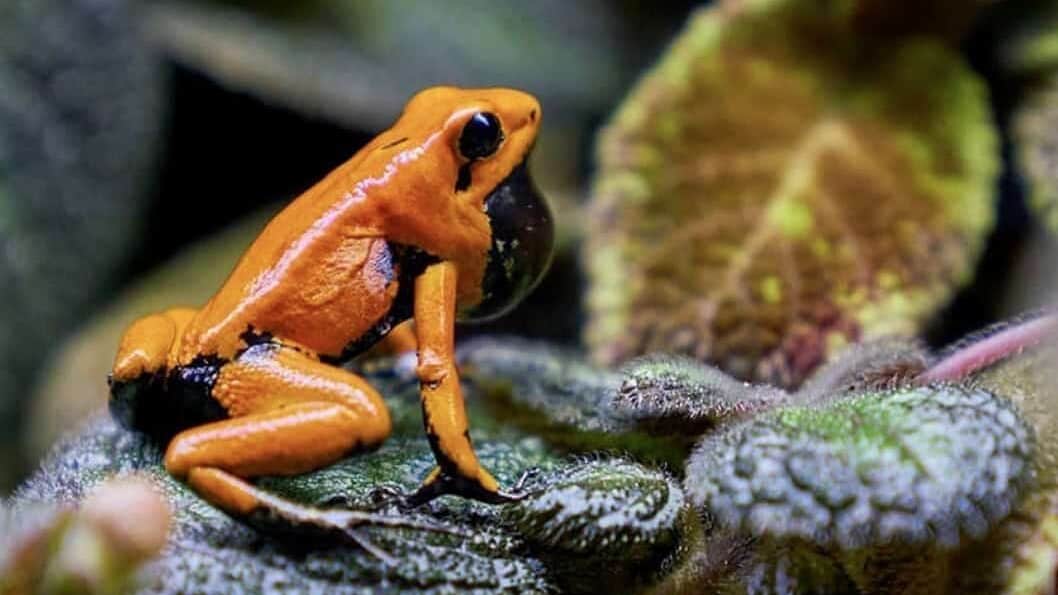
One of the most fascinating aspects of the golden poison frog’s toxicity is that the frogs don’t produce batrachotoxin themselves. Instead, they acquire and sequester these toxins through their diet in the wild. Research suggests that the primary source of these toxins are specific species of beetles and possibly ants that the frogs consume. This dietary acquisition explains why golden poison frogs born and raised in captivity lack the deadly toxins of their wild counterparts. Without access to their natural prey items containing the precursors to batrachotoxin, captive frogs never develop toxicity. This phenomenon, known as sequestration, demonstrates the complex ecological relationships between these frogs and their environment. Scientists are still working to identify all the specific arthropod species involved in this toxin transfer chain, highlighting how much remains to be discovered about these ecological relationships. The diet-toxicity connection also underscores the importance of preserving intact ecosystems where these specialized relationships have evolved over millions of years.
Scientific Interest and Medical Applications
The extraordinary toxins of the golden poison frog have attracted significant scientific interest, particularly in the fields of neuroscience and pharmacology. Batrachotoxin has become an invaluable research tool for understanding the function of sodium ion channels in nerve cells, as it binds specifically to these channels and keeps them permanently open. This property has helped scientists map the structure and function of these crucial components of the nervous system. Beyond basic research, the frog’s toxins hold potential for medical applications. Researchers are studying derivatives and analogs of these compounds that might be used to develop new pain medications, anesthetics, and treatments for conditions like epilepsy and cardiac arrhythmias. Additionally, understanding how the frogs themselves remain immune to their toxins could provide insights into developing antidotes for various poisons. The golden poison frog represents a perfect example of how nature’s most dangerous creations often hold keys to valuable medical advances.
Conservation Status and Threats

Despite its formidable defenses against predators, the golden poison frog faces significant threats to its survival. The International Union for Conservation of Nature (IUCN) lists the species as Endangered, with populations decreasing throughout its limited range. The primary threat comes from habitat destruction due to deforestation, agricultural expansion, illegal coca cultivation, and gold mining in Colombia’s Pacific coastal rainforests. Additionally, the species’ limited distribution—restricted to a few forest patches in the Chocó Department—makes it particularly vulnerable to environmental changes. Climate change presents another looming threat, as amphibians are often among the first species to show effects from altered rainfall patterns and temperature increases. While the international pet trade is less significant for this species than for other poison dart frogs (due to its extreme toxicity), illegal collection still occurs. Conservation efforts focus on habitat protection and the establishment of protected areas within the golden poison frog’s range.
Life Cycle and Reproduction
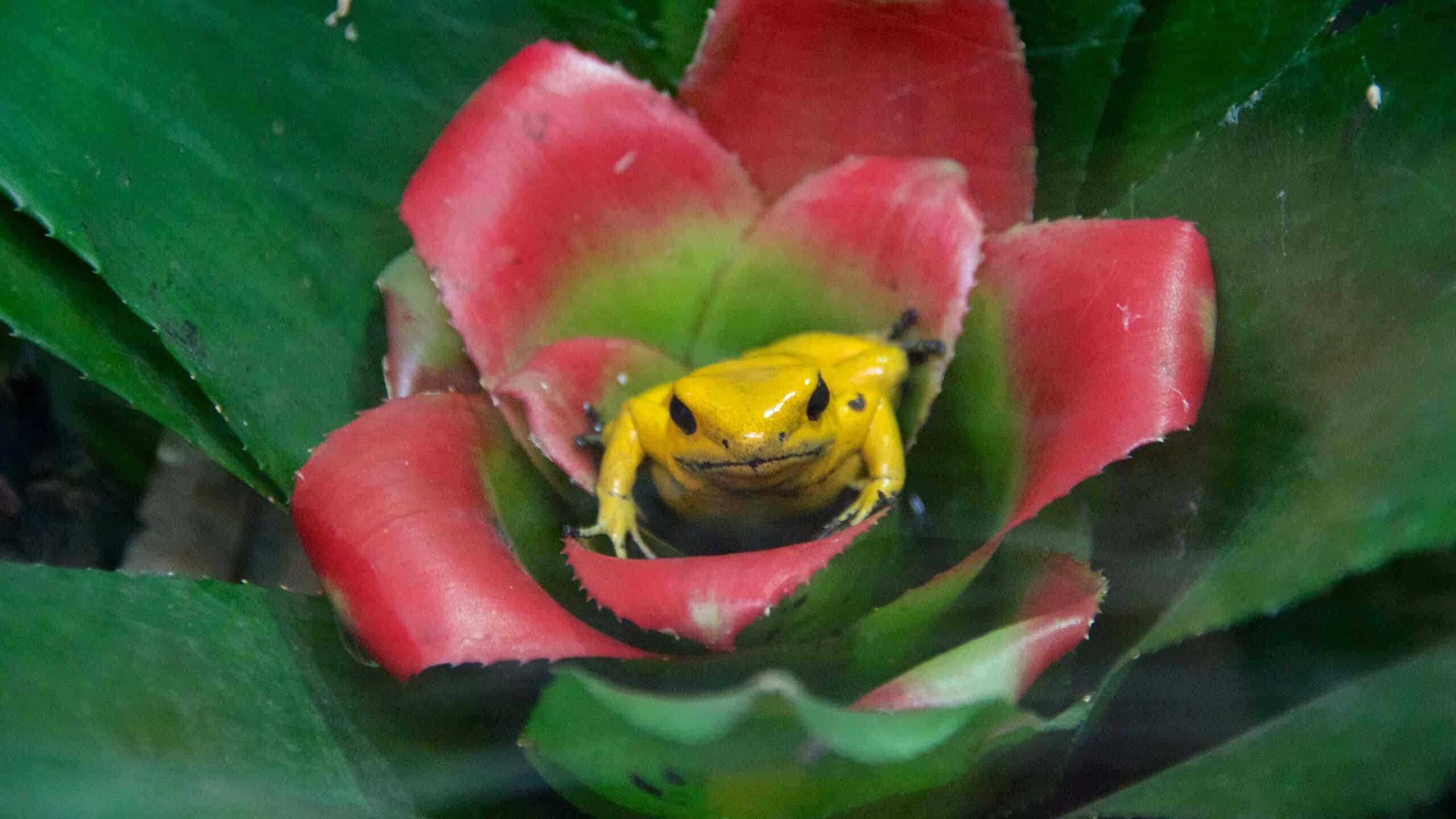
The golden poison frog exhibits fascinating reproductive behaviors that highlight the complex parental care found in some amphibian species. Unlike many frogs that lay hundreds of eggs at once in water, female golden poison frogs typically lay small clutches of 10-20 eggs in moist leaf litter on the forest floor. The male then guards the eggs, keeping them moist by periodically urinating on them until they hatch after approximately two weeks. When the tadpoles emerge, the attentive father carries them on his back, one or two at a time, to small water bodies such as water-filled tree holes, bromeliad tanks, or small puddles. These isolated water sources offer protection from aquatic predators that populate larger bodies of water. Each tadpole is deposited in a separate water body to reduce competition for limited resources. The tadpoles develop over 6-8 weeks before metamorphosing into froglets. Young frogs reach sexual maturity at about 1-2 years of age, with individuals in the wild potentially living 4-6 years, though captive specimens have survived for more than 10 years.
Physical Adaptations Beyond Toxicity
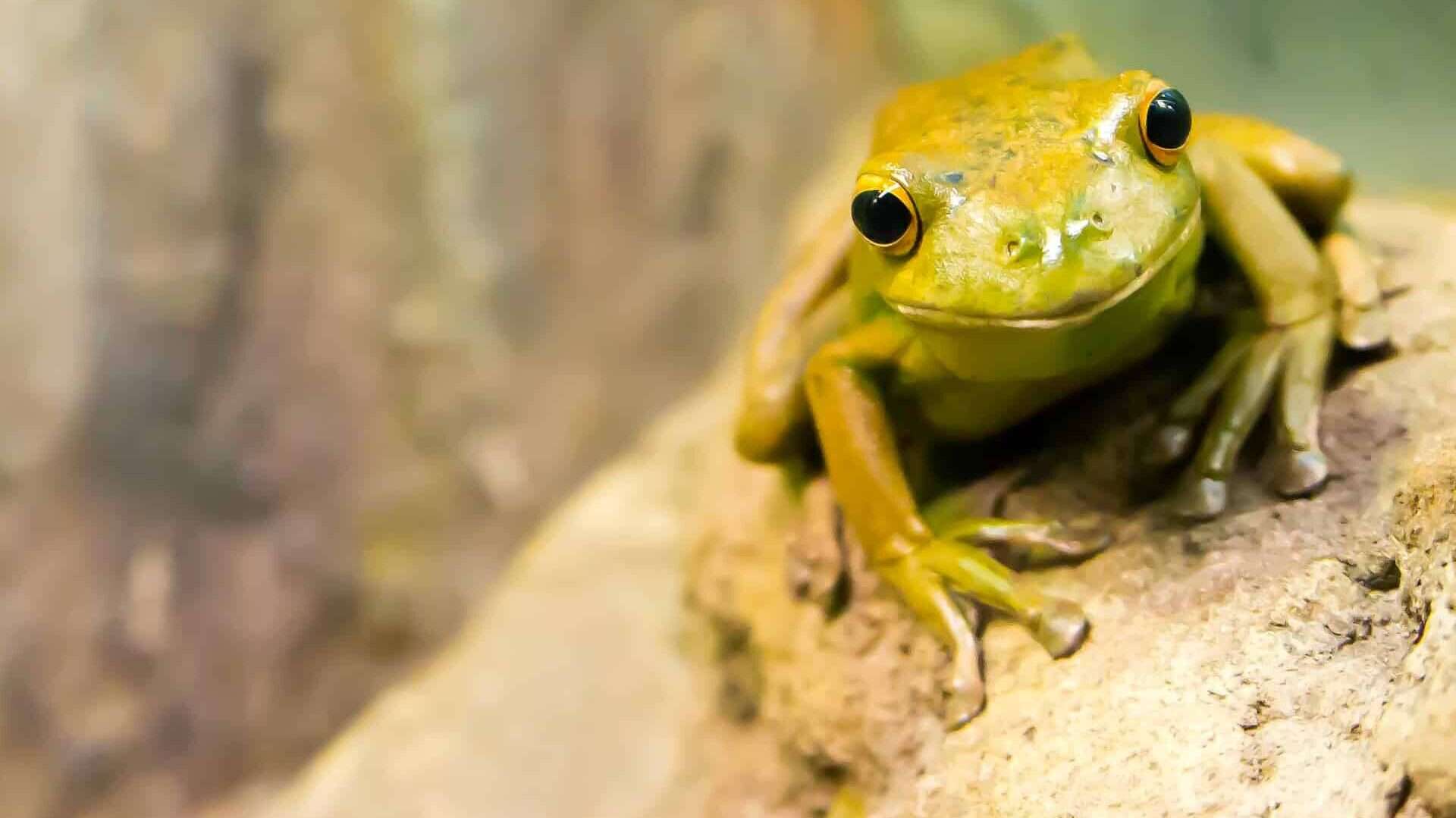
While the golden poison frog’s toxicity receives the most attention, these amphibians possess several other remarkable physical adaptations. Their bright coloration serves not only as a warning to predators but also plays a role in mate selection and species recognition. These frogs have excellent vision for amphibians, with eyes positioned to provide a wide field of view that helps them spot both predators and prey on the forest floor. Their toe pads contain specialized cells that produce a sticky secretion, allowing them to climb vertical surfaces with ease—an adaptation that helps them navigate their three-dimensional forest habitat and access breeding sites in tree hollows or bromeliad plants. Unlike many frogs that absorb water through their skin, poison dart frogs have relatively water-resistant skin (an adaptation related to their toxin production) and must drink water through their mouths. Their powerful hind legs enable them to make impressive jumps relative to their body size, helping them evade threats and capture prey. These adaptations, combined with their toxicity, have made golden poison frogs remarkably successful in their ecological niche despite their small size.
Behavior and Intelligence
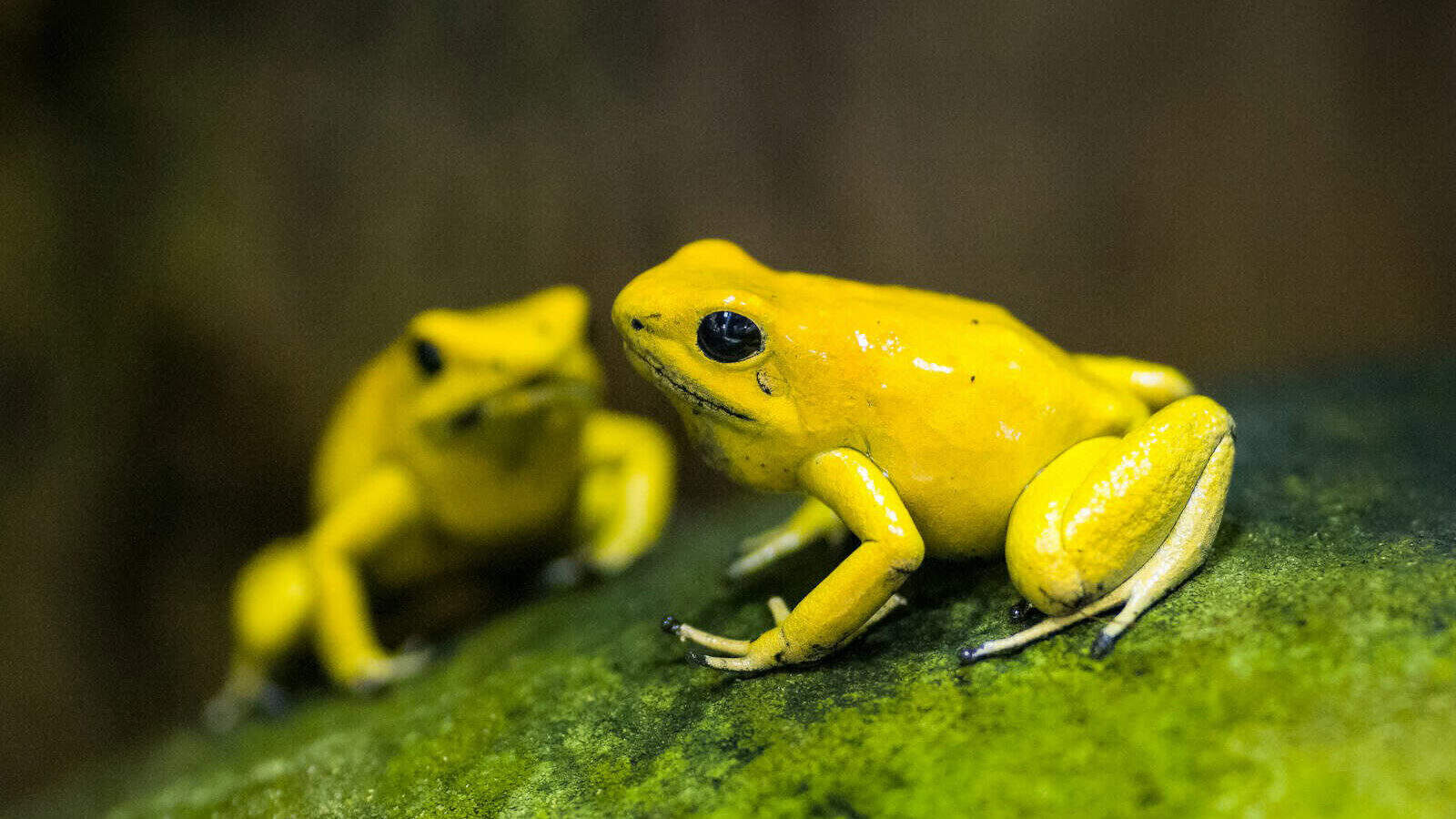
Golden poison frogs display surprisingly complex behaviors for amphibians, showing signs of intelligence that challenge traditional views of frog cognition. These frogs exhibit territorial behavior, with males actively defending their territories through vocalizations and physical displays. They are capable of recognizing individual conspecifics and remember the locations of food sources, breeding sites, and territory boundaries. Research suggests they possess spatial memory capabilities that help them navigate their complex forest environments. Their social behaviors include sophisticated communication through vocalizations, visual signals, and tactile interactions. Males produce distinct calls for territory defense, mate attraction, and general communication. Perhaps most impressively, their parental care behaviors require complex decision-making, such as selecting appropriate water bodies for tadpoles based on factors like size, predator presence, and food availability. These cognitive abilities may have evolved in response to the challenges of their rainforest habitat and their unique reproductive strategy, representing another fascinating dimension of these remarkable amphibians.
Cultural Significance
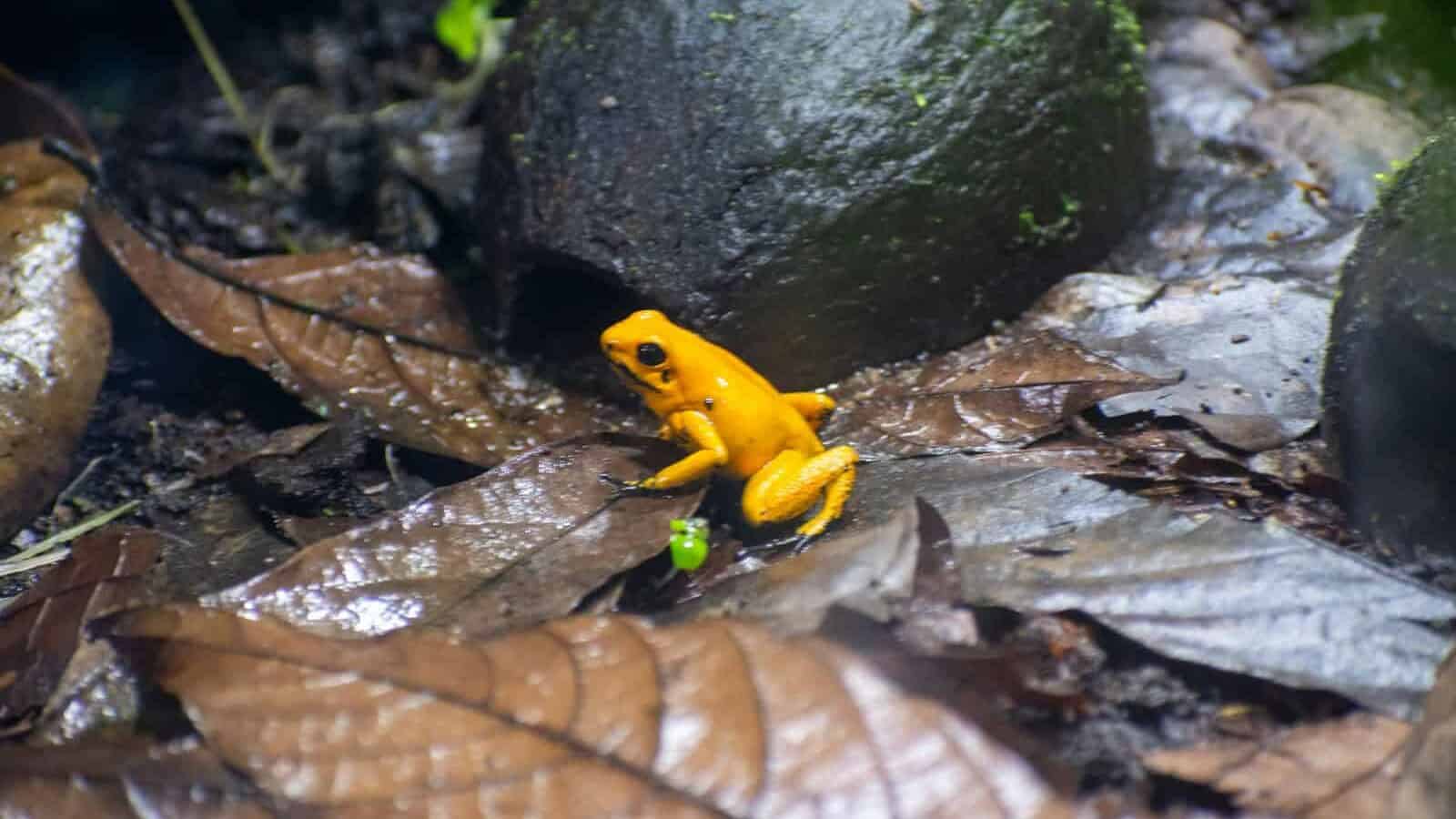
The golden poison frog holds significant cultural importance, particularly among the indigenous peoples of Colombia’s Pacific coast. For the Emberá and Chocó peoples, these frogs feature prominently in traditional stories and mythology, often symbolizing both danger and power. The frogs’ use in hunting practices created a cultural connection that spans centuries, with knowledge about handling the frogs and preparing their toxins passed down through generations. In modern Colombian culture, the golden poison frog has become an unofficial symbol of the country’s remarkable biodiversity and the unique natural heritage of the Chocó region. The frog appears in Colombian art, literature, and even tourism materials promoting the country’s natural wonders. Internationally, the golden poison frog has captured public imagination through feature appearances in nature documentaries, museum exhibits, and educational materials about rainforest ecosystems and chemical defenses in nature. This cultural significance adds another dimension to conservation efforts, as the species represents not just ecological value but cultural heritage as well.
Captive Care and Research
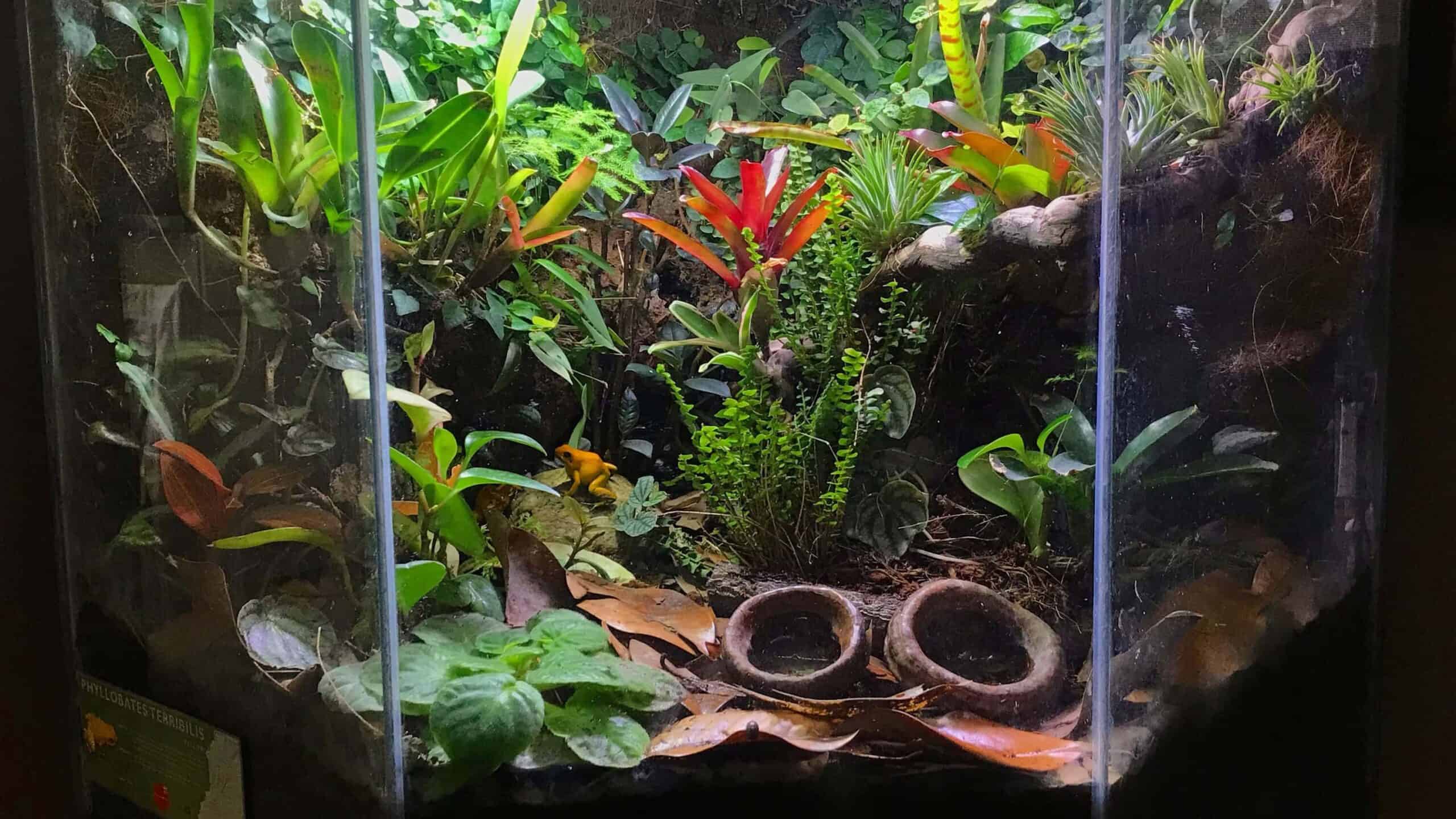
Golden poison frogs can be found in specialized zoo collections and research facilities worldwide, though they’re far less common in captivity than other poison dart frog species. These captive populations serve critical conservation and research purposes. In captivity, the frogs do not produce batrachotoxin, making them safe to handle—a fact that underscores the dietary origin of their toxins. Specialized care requirements include temperature-controlled environments mimicking their native rainforest (72-80°F with high humidity), UVB lighting, and complex terrariums with live plants, leaf litter, and climbing structures. Their diet typically consists of small insects like fruit flies, springtails, and pinhead crickets, often supplemented with calcium and vitamins. Breeding programs in zoos maintain genetic diversity and provide opportunities to study their reproductive biology and development. Research institutions keep specimens to study their behavior, physiology, and potential medical applications of toxin analogs. These captive populations also serve as educational ambassadors, helping the public learn about rainforest conservation, amphibian diversity, and the ecological importance of these remarkable creatures.
The golden poison frog stands as one of nature’s most remarkable paradoxes—a tiny, vibrantly colored amphibian harboring the most potent natural toxin known to science. Its extraordinary chemical defense system represents the pinnacle of evolutionary adaptation, allowing a small, otherwise vulnerable creature to thrive in the competitive rainforest ecosystem. Beyond its toxicological significance, this frog embodies the intricate connections between species, diet, habitat, and human culture, demonstrating how deeply intertwined these relationships become over evolutionary time. As we face a global amphibian extinction crisis, the golden poison frog’s endangered status serves as a powerful reminder of what stands to be lost—not just a fascinating species, but potential medical breakthroughs, ecological relationships we’ve barely begun to understand, and cultural connections spanning centuries. Preserving this toxic marvel and its rainforest home represents one of conservation’s most compelling challenges and opportunities.
- The Coldest Town in America—And How People Survive There - August 9, 2025
- How Some Birds “Steal” Parenting Duties From Others - August 9, 2025
- 12 Deep-Sea Creatures You Won’t Believe Exist - August 9, 2025

